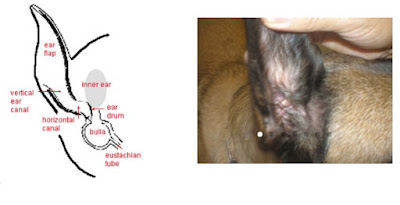South Bellmore Veterinary Group Review: How to take care of your pets during winter
As a pet owner, it is your responsibility to make
sure of the safety of your pets during extreme weather conditions where a case
like the huge drop in temperatures could happen in your area. And in relation
to this, there’s also the threat of bad winter storms, so to help you protect
your pets from such events, South Bellmore Veterinary Group
prepared a few tips for you.
Stay indoors
Once the temperature drops, it is your duty to
ensure that all your pets were inside the house. Experts add that this should
be the case specifically for short-haired animals. Cold temperatures outside
can be the enemy of cats so better keep your cats inside as well. Create a
draft-free shelter that is small enough to keep your dog’s body temperature
inside but it should also be able to let your pet move around. And in order to
provide insulations to the shelter, put straw or cedar shavings along with
something that could cover its entrance.
Double check
the cords
You must also be careful to not cause an
electrical fire, so better check properly the cords of devices that warm water
bowls. In addition, using heat lamps should be done with utmost care because
once it gets knocked down in dry bedding materials, it can quickly start fires.
Prepare a
good survival kit
Make sure that you have ample stock for your pet’s
emergency kit since urgent and critical situations were sometimes the case
during winter storms, which may include power outages or other incidents. South
Bellmore Veterinary Group would like you to remember pivotal items to keep in
preparation for a rough weather condition. First is, of course, food where you
are advised to keep at least a three-day supply inside an airtight and
waterproof container. The second one is water and similar to foods, gather at
least a three-day water supply.
In continuation of the previous paragraph, third
are medicines and medical records, while the fourth one focuses on essential
documents that include registration information, adoption papers, and
vaccination documents. In relation to this, you can discuss microchipping to
your veterinarian and might as well enroll your pet in a recovery database. The
fifth includes first aid kit so better have enough supply of cotton bandage
rolls, bandage tape, bandage scissors, latex gloves, isopropyl alcohol, a
saline solution along with antibiotic ointment, and flea and tick prevention.
South Bellmore Veterinary Group also advises keeping a reference book about
pet’s first aid. The seventh consist of collar or harness with ID tag, rabies
tag, and a leash, while the eighth requires you to keep a crate or pet carrier.
In case the local authorities require your family to evacuate, make sure you
have a sturdy and a safe crate or carrier for your pets where they can also
stand, turn around or lie down inside.
You might find it odd to include a picture of you
and your pet together in the list of your survival kit but if the situation got
worse and you’ve suddenly become separated with your pet, you can document
ownership and let other people help you through a photo of you and your pet
together. Remember to put the individual characteristics of your pet such as
its gender, age, breed, color, and species.
Due to the harsh environment, your pets might not
be able to relax due to fear or stress so make sure to include items that were
very familiar to your pets on your survival kit. Those items might include
treats, toys or bedding and such can help your pets reduce stress or calm their
mind.
Prepare proper sanitation tools for your pet’s
litter box as well and have enough supply of newspapers, paper towels, plastic
trash bags and household chlorine bleach. See to it that you have the right
bedding and habitat materials reserved for your exotic pets too.
Other notes
During severe cold snaps, exposed skin on your
pet’s nose, ears, and paw pads are vulnerable to frostbite and hypothermia. Put
a sweater on your dog especially if it is short-haired so that it could feel
more comfortable. If you’re going to melt snow and ice using rock salt and
other chemicals, make sure to wipe all the paws of your pet with a damp cloth
since such substances can irritate the pads of your pet’s feet.
South Bellmore Veterinary Group would like you to
report neglected animals to authorities especially if the animals were outside
and exposed to the dangers of the cold weather. Your pet is your responsibility
but other animals need your help as well during the harsh weather so never
abandon one and report its presence to the local authority right away.


Comments
Post a Comment